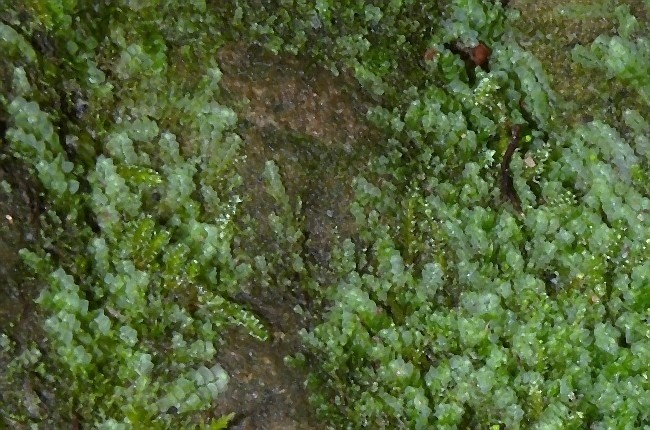
Both the upper-lateral leaves and underleaves are translucent with hexagonal or irregularly polygonal cells. The walls separating these cells are relatively narrow. At the bases of the underleaves, clusters of fibrous rhizoids develop that are able to adhere to the underlying substrate. Both male and female reproductive organs develop from short lateral branches. Male reproductive branches resemble non-reproductive leafy stems, except they are smaller in size. Female reproductive branches terminate in a narrow pouch-like structure called a marsupium. The marsupium hangs below the leafy stem from which it originated, sometimes subsiding into the substrate. After fertilization occurs, a spore-bearing capsule on a long white stalk develops. This capsule splits apart into several sections to release the spores to the wind. Sometimes this leafy liverwort develops vegetative buds (gemmae) near the tips of its leafy stems or around the margins of its leaves. These buds eventually detach themselves, after which they are capable of forming new clonal plants under favorable conditions.
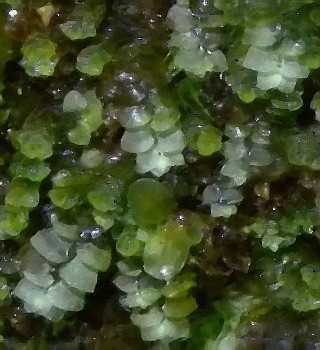
Cultivation: The preference is deep to light shade, wet to moist conditions with high humidity, and exposed rocky surfaces (preferably sandstone) that are protected from the wind. This liverwort can also adapt to exposed sandy or rocky ground in moist areas where there is protection from direct sun and wind.
Range & Habitat: Mueller's Pouchwort (Calypogeia muelleriana) is a native liverwort that occurs uncommonly in southern and southeastern Illinois (see Distribution Map). It is widely distributed in both North America and Europe. In Illinois, habitats include moist sandstone walls along streams, the base of sandstone cliffs, crevices of sandstone outcrops, and moist sandy or rocky ground in woodlands. Less often, this liverwort has been found on shaded limestone. Mueller's Pouchwort is restricted to high quality natural areas within the state.
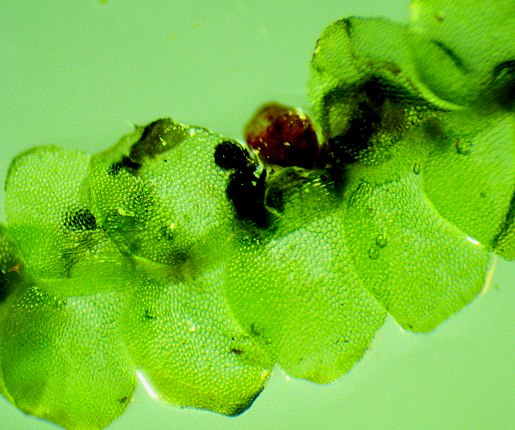
Faunal Associations: The larvae of a mandibulate archaic moth, Epimartyria auricrinella (Goldcap Liverwort Moth), is known to feed on leafy liverworts in eastern USA, including probably Calypogeia spp. (Glime, 2017g).
Photographic Location: A wet sandstone wall along a deep ravine at the Portland Arch Nature Preserve in west-central Indiana.
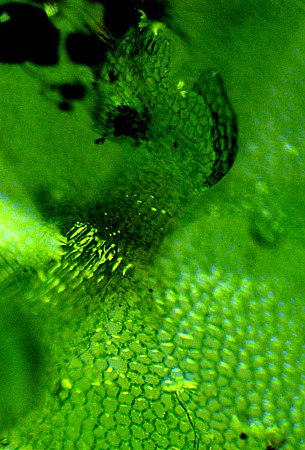
Comments: This is considered a difficult genus of liverworts with a history of taxonomic instability. The species in this genus can be distinguished by the differing shapes of their upper-lateral leaves and the differing shapes of their underleaves. Mueller's Pouchwort (Calypogeia muelleriana) has upper-lateral leaves that lack teeth or lobes and their tips are rounded to obtuse, rather than sharply angular. This leafy liverwort is also somewhat larger in size than some species in its genus, and its leafy stems tend to be grayish green or grayish blue, rather than whitish or light green. The underleaves of Mueller's Pouchwort are divided into two terminal lobes, and these lobes extend to about one-fourth to one-third of the length of the underleaves.
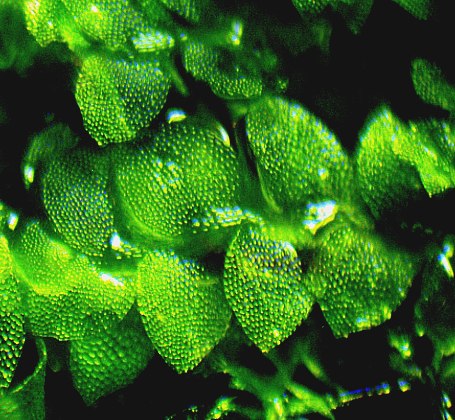
Other species in this genus have unlobed underleaves or their lobes extend to at least one-half of the length of the underleaves. There are also differences in how wide the underleaves are in relation to the diameter of the stems to which they are attached. Mueller's Pouchwort has underleaves that are about twice as wide as its stems, while other species in this genus have underleaves that are only slightly wider than their stems, and still others have underleaves that are more than twice as wide as their stems. In Illinois, Mueller's Pouchwort occurs in more counties than most species in this genus, although it is still uncommon. An alternative spelling of the scientific name is Calypogeja muelleriana.